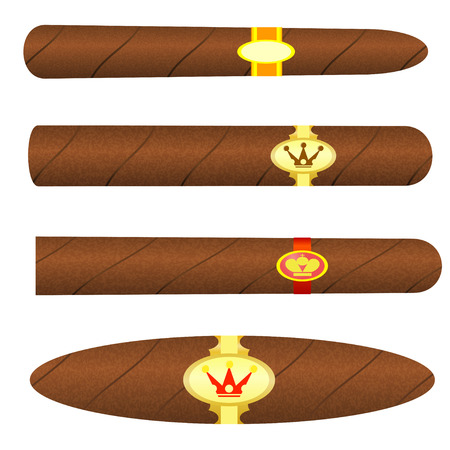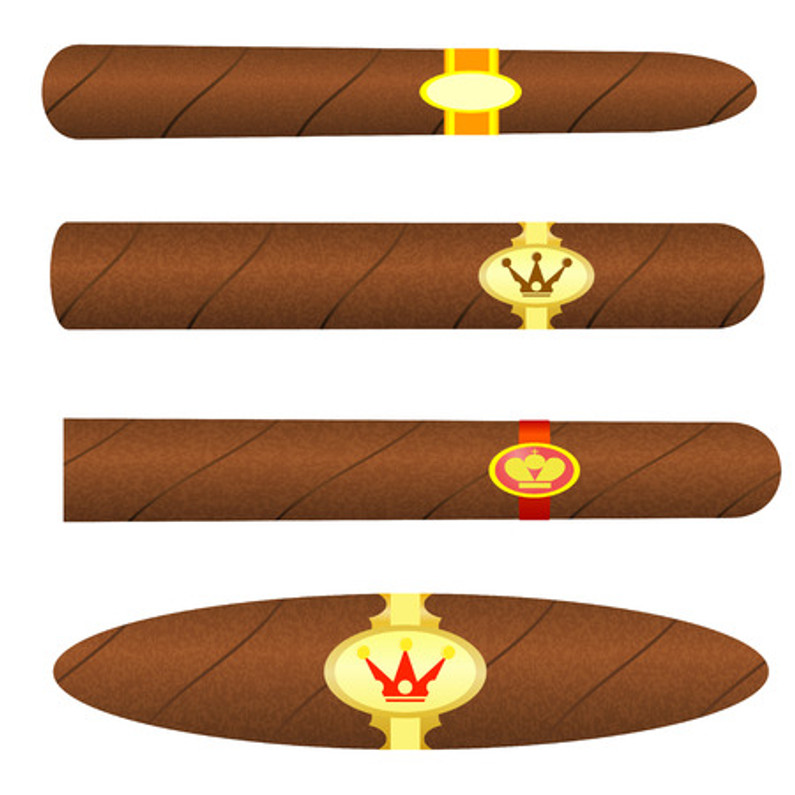The Cigar Shapes, Shades And Sizes You Need To Know About
A cigar is not a one-size-fits-all product.
They come in a variety of shapes, shades, and sizes.
This isn’t something seasoned smokers wouldn’t know, but if you’re new to cigars, then this might be news to you. If you’d like to glean more enjoyment from your smoking, then knowing about the different types of cigars can heighten your experience.
So, you might be asking yourself:
Is there any correlation between size and taste? What about strength? If you bought the same cigar type from two different brands, would you be getting the same product?
Let’s explore these questions together.
Sizes & Shapes Of Cigars
The size of a cigar varies from one brand to another. That shouldn’t come as a surprise.
There are essentially two factors to consider when it comes to cigar shapes and sizes: Length and ring gauge.

The length is straightforward – it’s measured in inches. The ring gauge is a little more complex. It’s a way of describing a cigar’s diameter. A cigar that has a 50 ring gauge would be 50/64 of an inch in diameter.
The strength or flavor of a cigar generally has nothing to do with its size. It all comes down to the tobacco it is rolled with.
So, although there are terms that define different sizes and shapes of cigars, there isn’t any consistency from one brand to another. One company’s Churchill might have a different taste than the other.
Parejos
Most cigars are parejos. These are straight-sided cigars. You’ll need to cut them before smoking, and most have an open foot for lighting. Parejos are either round or box-pressed. Box-pressed cigars have square sides. This may have been done before they were packed, or it may have occurred as result of the pressure in the box.
Here are the different types of parejos available:
- Corona. Most coronas are 5 ½ to 6 inches and have a ring gauge between 42 to 44. A corona is the benchmark for all cigar sizes.
- Petit corona. This is essentially a smaller corona, measuring roughly 4 ½ inches with a ring gauge between 40 to 42.
- Churchill. A Churchill is a larger corona. They are usually about 7 inches with a 47 gauge.
- Robusto. This is a shorter, fat cigar. Incidentally, it’s the most popular one in America. Size varies. It can measure anywhere from 4 ¾ to 5 ½ inches, with a ring gauge of 48 to 52.
- Corona gorda. The corona gorda measures 5 5/8 inches with a 46 ring gauge.
- Double corona. Double coronas are quite large. They are generally 7 ½ to 8 ½ inches with a 49 to 52 ring gauge.
- Panatela. The panatela is long and thin. It can vary in size, at 5 to 7 ½ inches with a gauge of 34 to 38.
- Lonsdale. The Lonsdale is like a fusion of the corona and panatela. It measures 6 ½ inches with a 42 ring gauge.
Figurados
Any cigar that isn’t a straight-sided cylinder is a figurado. There is nothing set in stone in terms of size or even flavor, but the following are the most common types:
- Pyramid. This is a cigar with cut feet with the heads tapered to a point. It can be 6 to 7 inches in length, with ring gauge at about 40 at the head, and 52 to 54 at the foot.
- Belicoso. A belicoso is essentially a shorter pyramid. The length is about 5 to 5 ½ inches with an approximate ring gauge of 50.
- Torpedo. Most torpedos are actually just box-pressed pyramids. A genuine torpedo is rare. It has a closed foot, a bulge in the middle, and the head tapered to a point.
- Perfecto. The perfecto has a closed foot with a bulge in the middle. The length of a perfecto varies great – anywhere from 4 ½ inches to 9 inches. Ring gauges also vary, from 38 to 48.
- Culebra. A culebra is three panatelas braided together. They are typically 5 to 6 inches long with a 38 ring gauge. Culebras are rare.
- Diadema. The length of a diadema starts at 8 ½ inches, and it usually has a 40 ring gauge at the head, and 52 or larger at the foot.
Shades Of Cigars
There are essentially seven colors for cigar wrappers, with a near infinite range of shades in between. The Colorado sits right at the middle in terms of shade.
Tabaco is processed in a variety of ways, and its color can also be affected by sunlight.
The most common wrapper colors are:
- Double claro. This refers to a light green wrapper and it involves a quick-drying process using heat. This preserves the green chlorophyll found in tobacco.
- Claro. A claro refers to a light tan wrapper. When plants are grown under cheesecloth tents and are picked early and air-dried, you get a claro.
- Colorado claro. Colorado claros have a light reddish-brown look to them. To achieve this color, plants are grown in direct sunlight.
- Colorado. A Colorado refers to a medium brown or brown-red cigar. The wrappers are typically grown in the shade.
- Colorado Maduro. This lies somewhere between a Colorado and a Maduro. It’s darker than the Colorado, and lighter than the Maduro.
- Maduro. The color of a Maduro can vary from red-brown to black. A Maduro takes longer to achieve. The leaves must be fermented for longer in heat, or toasted in a pressure chamber.
- Oscuro. This is the darkest wrapper there is, and it’s as black as black gets. An oscuro is impossible to make without using the leaves from the top of the plant and fermenting them for a long time.
Conclusion
Do you feel well-acquainted with the different types of cigars now?
Now that you’ve learned about the different shapes, shades, and sizes of cigars, perhaps you could start conversing more intelligently with other cigar aficionados. Or, maybe you could introduce your friends to the different types of cigars available.
Recent Posts
-
The Role of Fermentation in Cigar Production
When you think of cigars, your mind likely goes straight to their rich flavors, smooth smoke, and un …24th Jan 2025 -
8 Common Humidor Mistakes to Avoid
If you're a cigar aficionado, you know that a quality humidor is essential for maintaining the flavo …23rd Jan 2025 -
The Art of Pairing Cigars and Food
If you're a cigar enthusiast, you're likely always looking for ways to elevate your experience. One …22nd Jan 2025




